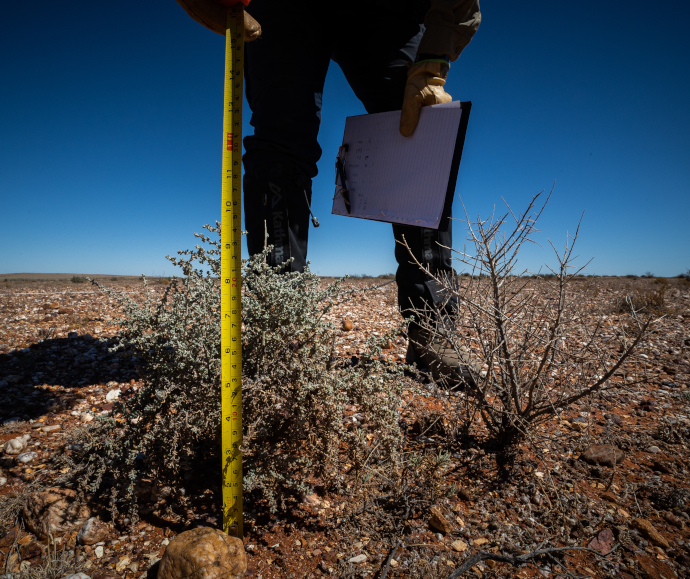17 March 2024
 Outback New South Wales is a harsh landscape where the wet and dry seasons are unforgiving. It is here that scientists are studying ‘greenspots’– patches of land that retain moisture and can provide critical refuge for wildlife. With the region likely to see an increase in extreme floods and prolonged droughts, the Greenspots project is more important than ever for conserving threatened species like the stripe-faced dunnart (Sminthopsis macroura) and the Forrest’s mouse (Leggadina forresti).
Outback New South Wales is a harsh landscape where the wet and dry seasons are unforgiving. It is here that scientists are studying ‘greenspots’– patches of land that retain moisture and can provide critical refuge for wildlife. With the region likely to see an increase in extreme floods and prolonged droughts, the Greenspots project is more important than ever for conserving threatened species like the stripe-faced dunnart (Sminthopsis macroura) and the Forrest’s mouse (Leggadina forresti).
Scientists from the NSW Government’s Department of Climate Change, Energy, the Environment and Water used satellite imagery to locate greenspots in the landscape. The team conducted surveys at these spots to understand where threatened species occur in relation to these greenspots. So far, the team has recorded various threatened species including several eastern fat-tailed geckoes (Diplodactylus platyurus) – an endangered species that has had only 20 recorded sightings in the last 20 years.
Help on the ground
 Much of the project groundwork requires access to private land. Project partner Western Local Land Services has been working with landholders, land managers and decision makers to close the gap between research and management. This exchange of connections and local knowledge has been key to the progress of the project.
Much of the project groundwork requires access to private land. Project partner Western Local Land Services has been working with landholders, land managers and decision makers to close the gap between research and management. This exchange of connections and local knowledge has been key to the progress of the project.
’Private land makes up around 70% of the state, and without the welcoming hosts we’ve partnered with, our knowledge of refugia in the arid zone would be biased and limited,' said Dr Krystyna Jordan, Senior Scientist, Saving our Species.
'The unique flora and fauna on private land is critical for landscape-scale conservation efforts, and to work with people so close and connected to the country is invaluable.’
An extension of the project will soon begin in Mutawintji National Park, working with the Mutawintji Board of Management and Mutawintji Local Aboriginal Land Council. As this is the first co-managed national park in New South Wales, co-designing with Aboriginal peoples is an important part of the project. It will allow:
- access to Country
- Aboriginal knowledge sharing
- employment and training opportunities for the local community.
Learn more
Find out how your organisation can play a key role in supporting this project and other research projects. Opportunities for interested partners could include funding of:
- Aboriginal knowledge sharing, engagement, employment and training to implement co-designed work on Country
- science-based conservation of critical refuges for wildlife in the arid landscape.
Contact the Saving our Species Partnerships Team to start a conversation about conservation today.


